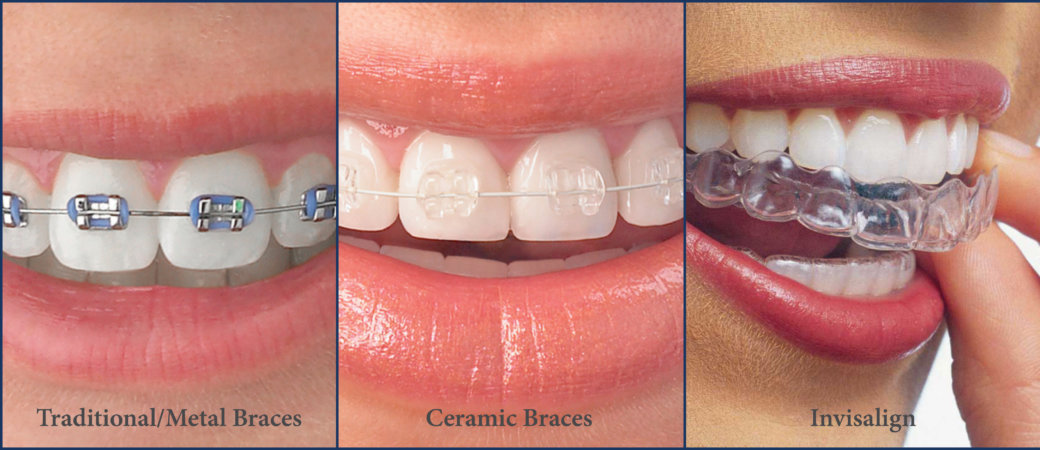The 25-Second Trick For Causey Orthodontics
The 25-Second Trick For Causey Orthodontics
Blog Article
The Best Guide To Causey Orthodontics
Table of ContentsCausey Orthodontics Can Be Fun For EveryoneAll about Causey OrthodonticsFascination About Causey OrthodonticsFacts About Causey Orthodontics UncoveredCausey Orthodontics for Dummies
Ignoring occlusal relationships, it was regular to eliminate teeth for a range of oral issues, such as malalignment or congestion. The idea of an intact teeth was not commonly valued in those days, making bite relationships seem irrelevant. In the late 1800s, the idea of occlusion was essential for creating trustworthy prosthetic substitute teeth.As these concepts of prosthetic occlusion advanced, it became an indispensable device for dentistry. It was in 1890 that the job and impact of Dr. Edwards H. Angle began to be really felt, with his contribution to modern orthodontics specifically noteworthy. Originally concentrated on prosthodontics, he instructed in Pennsylvania and Minnesota before directing his focus in the direction of oral occlusion and the treatments required to preserve it as a typical problem, hence becoming referred to as the "papa of contemporary orthodontics".

The concept of ideal occlusion, as proposed by Angle and integrated into a classification system, made it possible for a shift towards treating malocclusion, which is any type of inconsistency from normal occlusion. Having a complete collection of teeth on both arcs was extremely sought after in orthodontic treatment because of the need for precise partnerships in between them.
Indicators on Causey Orthodontics You Should Know
As occlusion came to be the essential priority, facial percentages and aesthetics were overlooked - emergency orthodontist near me. To achieve ideal occlusals without making use of outside pressures, Angle proposed that having best occlusion was the most effective means to gain maximum facial looks. With the passing away of time, it became fairly obvious that even a phenomenal occlusion was not suitable when thought about from a visual factor of sight
Charles Tweed in America and Raymond Begg in Australia (who both researched under Angle) re-introduced dentistry removal right into orthodontics throughout the 1940s and 1950s so they might boost face esthetics while also making certain much better stability worrying occlusal connections. In the postwar duration, cephalometric radiography started to be utilized by orthodontists for gauging changes in tooth and jaw position triggered by development and therapy. It became noticeable that orthodontic therapy could adjust mandibular development, bring about the formation of useful jaw orthopedics in Europe and extraoral force actions in the United States. Nowadays, both useful appliances and extraoral tools are applied around the globe with the objective of amending growth patterns and types. As a result, seeking real, or at the very least improved, jaw partnerships had actually ended up being the primary purpose of treatment by the mid-20th century.
The Facts About Causey Orthodontics Revealed
 The American Journal of Orthodontics was produced for this function in 1915; prior to it, there were no scientific purposes to adhere to, nor any type of exact classification system and brackets that did not have functions. Up until the mid-1970s, braces were made by covering steel around each tooth. With improvements in adhesives, it ended up being feasible to rather bond steel brackets to the teeth.
The American Journal of Orthodontics was produced for this function in 1915; prior to it, there were no scientific purposes to adhere to, nor any type of exact classification system and brackets that did not have functions. Up until the mid-1970s, braces were made by covering steel around each tooth. With improvements in adhesives, it ended up being feasible to rather bond steel brackets to the teeth.Andrews provided an insightful interpretation of the optimal occlusion in long-term teeth. This has had significant results on orthodontic therapies that are administered frequently, and these are: 1. Right interarchal partnerships 2. Proper crown angulation (tip) 3. Correct crown inclination (torque) 4. No rotations 5. Tight get in touch with points 6. Apartment Contour of Spee (0.02.5 mm), and based on these principles, he uncovered a treatment system called the straight-wire home appliance system, or the pre-adjusted edgewise system.
The advantage of the design hinges on its bracket and archwire mix, which needs only minimal wire flexing from the orthodontist or medical professional (cheapest orthodontist near me). It's appropriately called after this feature: the angle of the port and thickness of the bracket base ultimately determine where each tooth is positioned with little requirement for additional manipulation
Rumored Buzz on Causey Orthodontics
Both of these systems used similar brackets for each and every tooth and demanded the flexing of an archwire in 3 aircrafts for situating teeth in their desired settings, with these bends determining ultimate placements. When it involves orthodontic devices, they are separated right into two types: detachable and repaired. Detachable appliances can be handled and off by the person as required.

Hence, nearly all contemporary set home appliances can be thought about variations on this edgewise device system. Early 20th-century orthodontist Edward Angle made a major payment to the world of dentistry. He developed four distinct home appliance systems that have been made use of as the basis for lots of orthodontic treatments today, preventing a couple of exceptions.
Causey Orthodontics Can Be Fun For Everyone

The cable ended in a thread, and to relocate it onward, a flexible nut was utilized, which permitted an increase in area. By ligation, each individual tooth was affixed to this large archwire (family orthodontics). Because of its limited variety of motion, Angle was incapable to achieve specific tooth placing with an E-arch
These tubes held a soldered pin, which can be repositioned at each appointment in order to relocate them in position. Dubbed the "bone-growing device", this contraption was supposed to encourage much healthier bone growth as a result of its capacity for moving force straight to the roots. Nevertheless, implementing it verified bothersome in reality.
Report this page